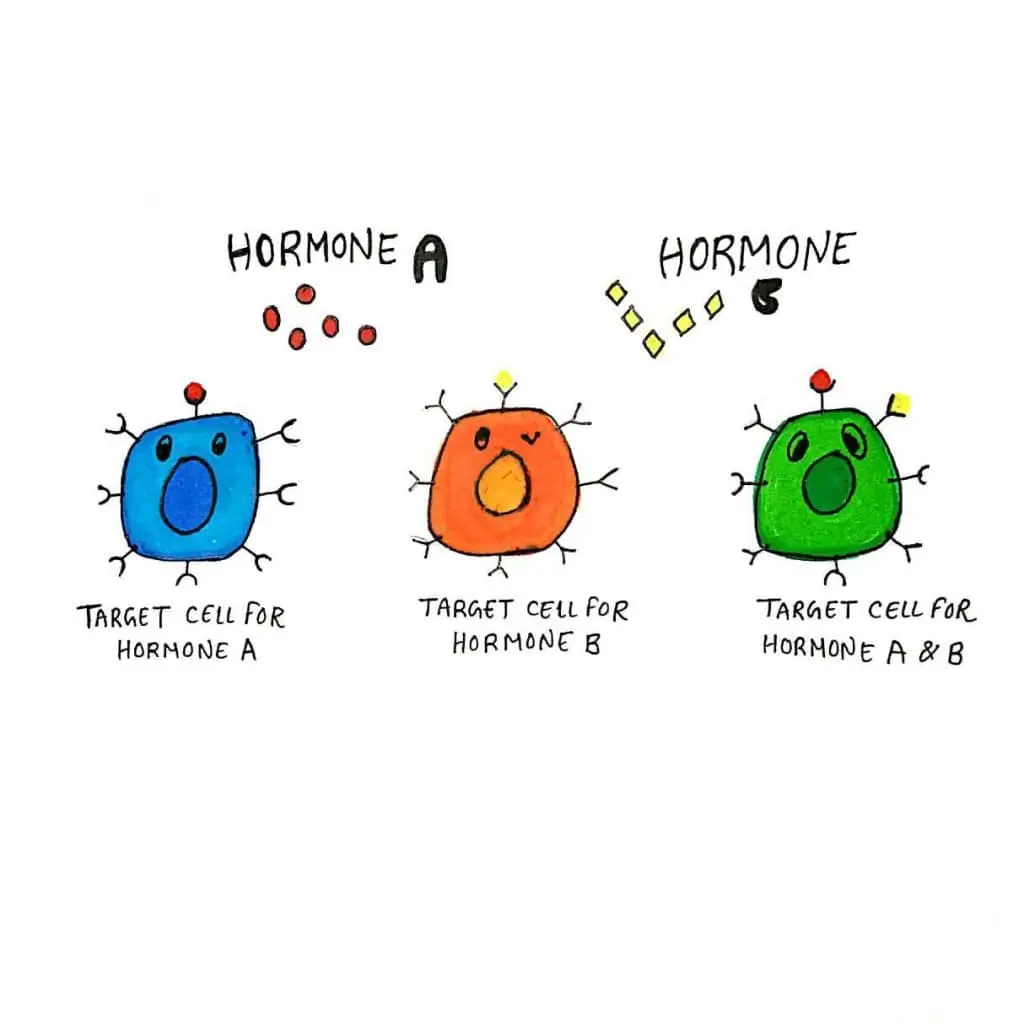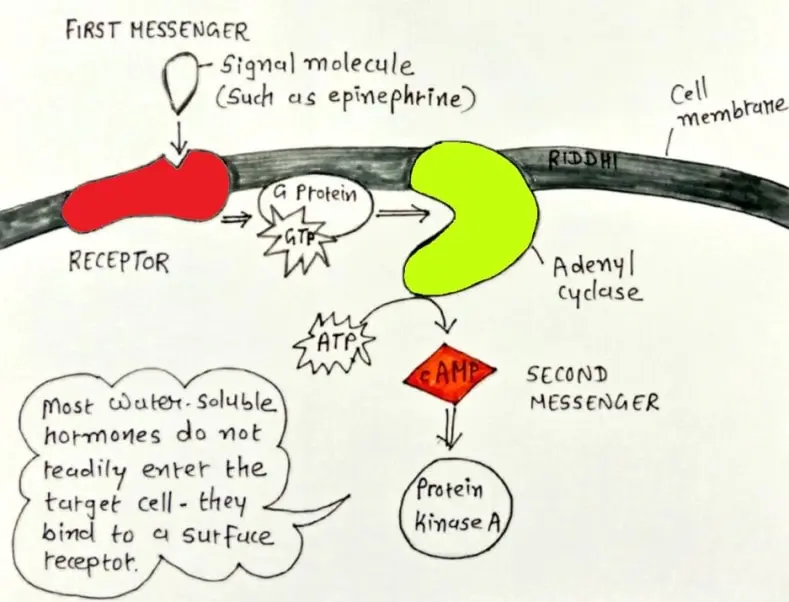
Table of Contents
ToggleDEFINITION OF HORMONE
- Hormones are chemical substances produced in the body to control or regulate the activities of certain cells or organs.
CHEMISTRY OF HORMONES
- Chemical messengers.
- Synthesized by Endocrine glands (Ductless glands which secrete hormones directly into bloodstream).
- Classified into three types according to their chemical nature.
1)STEROID HORMONES
- Synthesized from Cholesterol or its derivatives.
- Secreted by Adrenal Cortex, Gonads & Placenta.
2)PROTEIN HORMONES
- They are large or small peptides.
- Secreted by Pituitary Gland, Parathyroid Glands, Pancreas & Placenta (‘P’s).
3)TYROSINE DERIVATIVES
- Derived from the Amino-Acid Tyrosine.
- They are of two types- Thyroid hormones & Adrenal Medullary hormones.
So, let’s know how does these hormones work?
INTRODUCTION TO HORMONES
Hormones does not act directly on target cells, first they combine with receptors on the target cells and forms HORMONE-RECEPTOR COMPLEX.
This complex develops various changes in the target cells.
Before we learn about mechanism of action of hormones, we need to understand HORMONE RECEPTORS.
HORMONE RECEPTORS
- They are large proteins present in the target cells.
- Each cell has thousands of receptors.
- Each receptor is specific for one single hormone i.e. each receptor can combine with only one hormone.
- That means a hormone can act on a target cell, only if the target cell has the receptor for that particular hormone.
- Situation: Either in cell membrane or cytoplasm or nucleus of target cells.
Examples
- Cell membrane- Receptor of Protein hormones (Glucagon, Growth hormone) & Adrenal medullary hormones.
- Cytoplasm- Receptors of Steroid hormones (Aldosterone, Glucocorticoids, Mineralocorticoids).
- Nucleus- Receptors of Thyroid hormones.
How these Hormone receptors are being regulated?
- Hormone receptors are not stable components of cells.
- Their number increases or decreases in various conditions
- Down Regulation: When excess hormone is secreted, the number of hormone receptors decreases due to hormone-receptor binding.
- Up Regulation: During the deficiency of hormones, the number of receptors increases.
How does hormone enter into the target cells?
- Hormone in the form of hormone-receptor complex enters the target cells by endocytosis.(Process by which a living cell takes up molecules attached to its surface).
- The process is called Internalization.
MECHANISM/ MODE OF ACTION
Hormones do not act directly on the target cells.
- It combines with receptor to form Hormone-receptor complex.
- This complex executes the hormonal action by any one of the following mechanisms.
BY ALTERING PERMEABILITY OF CELL MEMBRANE
- The Neurotransmitters in synapse or neuromuscular junction act by changing the permeability of postsynaptic membrane.
- The Acetylcholine increases permeability of postsynaptic membrane for sodium by opening the ligand-gated sodium channels.
BY ACTIVATING INTRACELLULAR ENZYMES
The Protein hormones and catecholamines act by activating the intracellular enzymes.
A) First Messenger
- Hormone which acts on a target cell, is called first messenger or chemical mediator.
- It combines with receptor and forms hormone-receptor complex.
B) Second Messenger
- Hormone-receptor complex activates the enzymes of cell and causes formation of another substance called second messenger.
- Second messenger produces effects of hormone inside cells.
Most common second messenger is Cyclic AMP.
Cyclic AMP
Acts as a Second messenger for protein hormones
↓
The G proteins are membrane proteins situated on inner surface of the cell membrane
↓
Each G protein molecule is made up of three subunits called α, β and γ subunits.
↓
The Hormone binds with receptor in cell membrane and forms the hormone-receptor complex, it activates the G protein.
↓
The α-GTP unit activates the enzyme Adenyl cyclase
↓
Activated Adenyl cyclase converts the ATP into cAMP
ACTIONS OF cAMP
Cyclic AMP executes the actions of hormone by stimulating the enzymes like protein kinase A.

OTHER SECOND MESSENGERS
Calcium ions and calmodulin:
Many hormones act by increasing the Calcium ions, which functions as second messenger
Inositol triphosphate (IP3):
IP3 is formed from phosphatidylinositol bisphosphate (PIP3)
↓
Hormone-receptor complex activates the enzyme phospholipase, which converts PIP2 into IP
↓
IP3 acts on Protein kinase C and causes physiological response.
